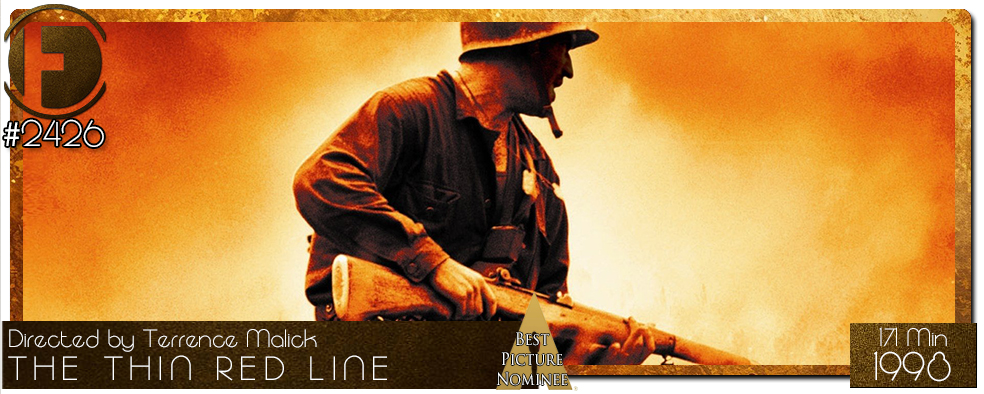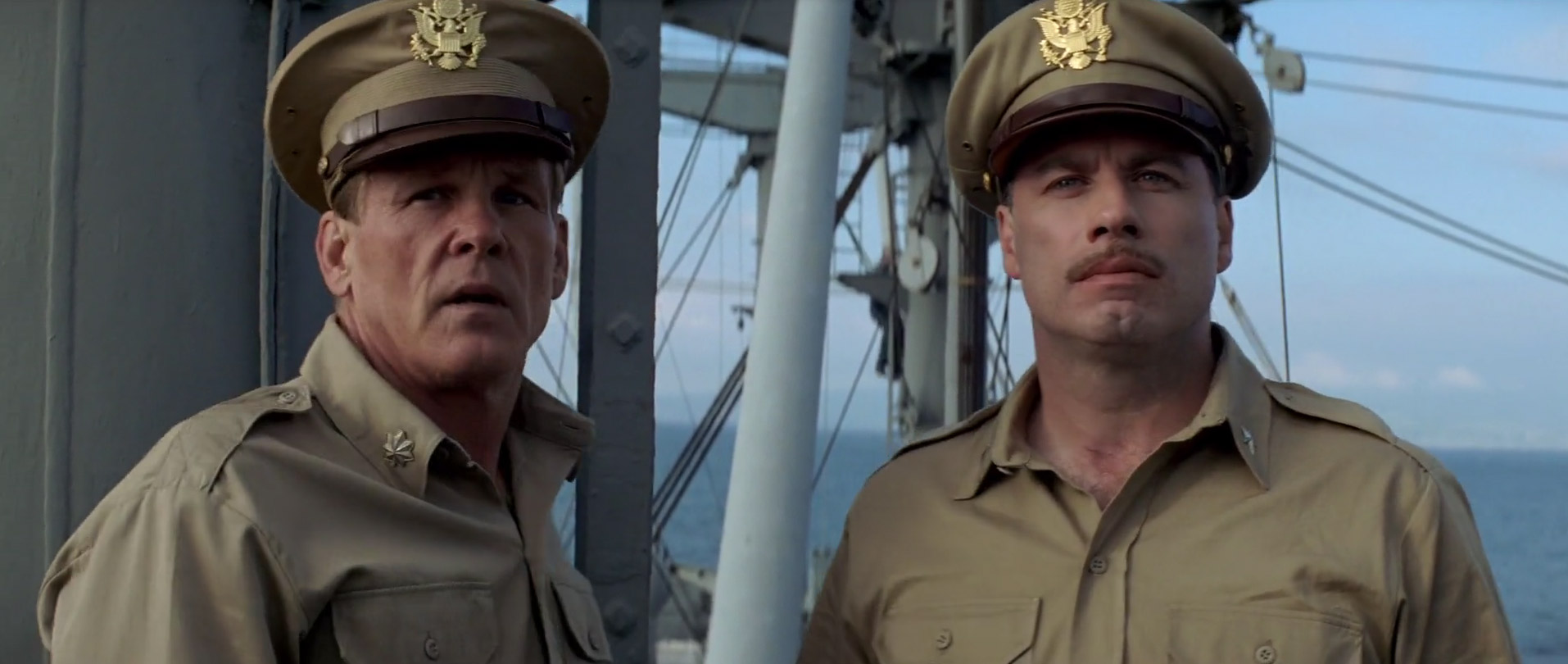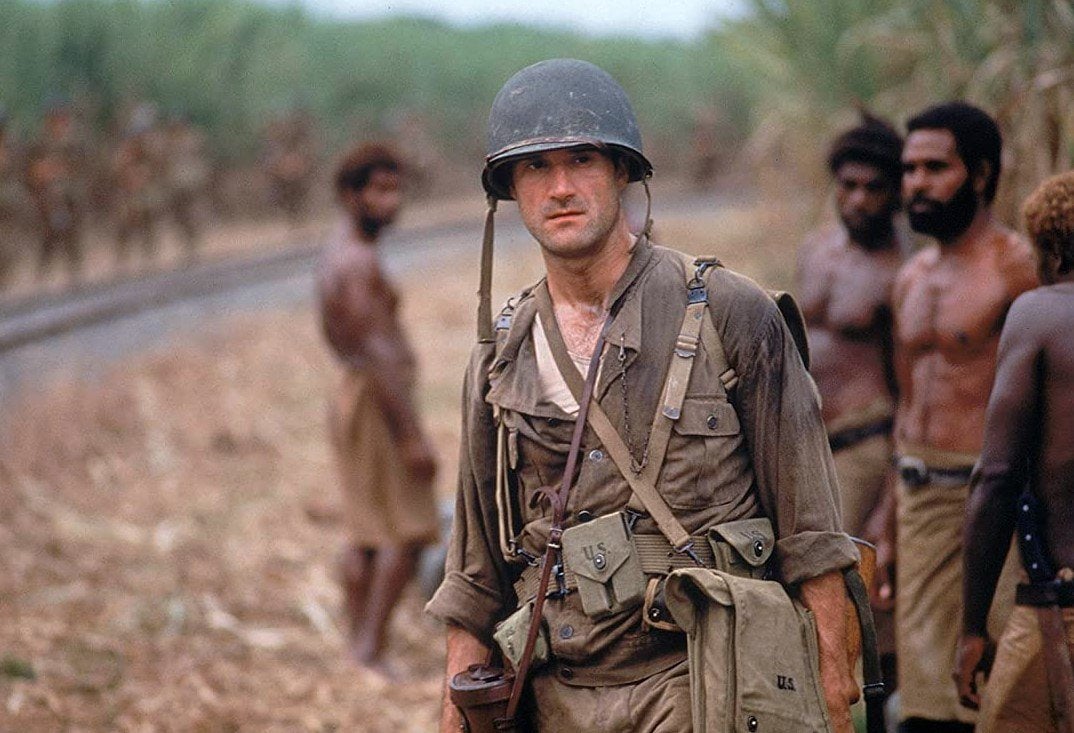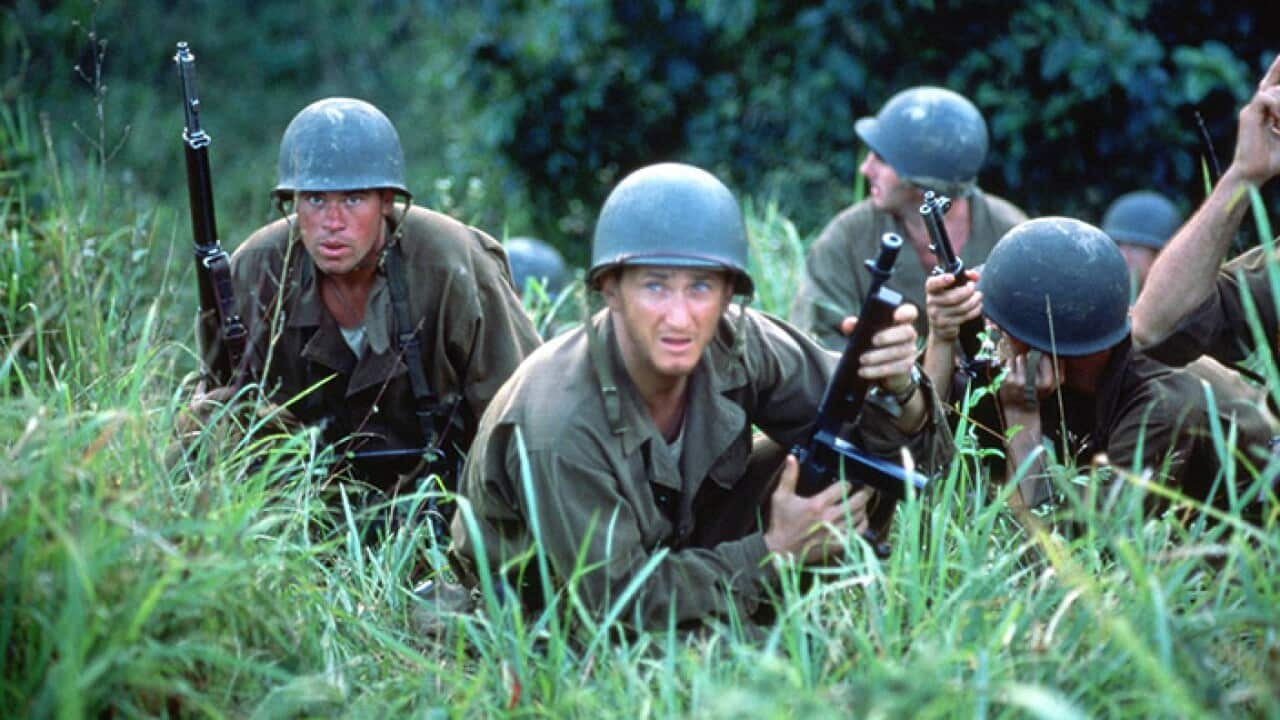Movie Review – Thin Red Line, The

Principal Cast : Sean Penn, Adrien Brody, Jim Caviezel, ben Chaplin, George Clooney, John Cusack, Woody Harrelson, Elias Koteas, Jared Leto, Dash Mihok, Tim Blake Nelson, Nick Nolte, John C Reilly, Larry Romano, John Savage, John Travolta, Arie Verveen, Thomas Jane, Miranda Otto, Donal Logue, Nick Stahl, Kirk Acevedo, Penny Allen, Mark Boone Jr, Matt Doran, Don Harvey, Danny Hoch.
Synopsis: Adaptation of James Jones’ autobiographical 1962 novel, focusing on the conflict at Guadalcanal during the second World War.
********
War is hell. And until Terrence Malick returned from his self-imposed Hollywood exile, we had yet to see war dissected in such a poetic, introspective manner. Unlike other filmmakers who sought to immerse us in the raw brutality of combat, Malick approached war through the prism of philosophy, memory, and nature itself. With The Thin Red Line, he constructed a haunting meditation on the inhumanity and insanity of battle, a film less concerned with spectacle and more interested in the psychological weight that war presses upon the soul.
Malick’s film is a sprawling, almost dreamlike examination of soldiers caught in the Pacific theatre during World War II, specifically the battle for Guadalcanal. The jungles of the Pacific, captured in all their terrifying beauty, provide the backdrop for a study of mankind’s fragility in the face of overwhelming destruction. Featuring a large and talented ensemble cast, including Sean Penn, James Caviezel, Nick Nolte, and Elias Koteas, The Thin Red Line strays from traditional war film tropes to explore war as a deeply existential crisis.
The Beauty. You stand, sweating, staring into an almost impenetrable jungle, insects flitting about your head in a desperate attempt to suck you dry. The howl and whistle, shriek and caw of distant wildlife echo across the mountainside, the jungle slowly giving way to a lush, grassy undergrowth. Somewhere up the mountain before you, hidden in a maze of tunnels and booby-traps, the enemy waits, guns trained upon the grass-top until you appear. Fear grips you, the uncertainty of the unknown suffocating. Nearby, a soldier sits, reading a letter from home. Tears roll down his cheeks, the shuddering sobs coming silently so as not to disturb the unnatural peace of the landscape. A tent nearby barely hides the tempered anger of officers debating their next course of action; your fate rests in their hands.
As you look around, you become aware of just how magnificent a place this really is. The tropical jungle is green, a serene beauty transcending the horror of humanity’s worst impulses. This place is paradise, yet it is tainted, spoiled by battle and the senseless desire to kill. Somewhere, somebody hums a listless tune, penetrating the silence like a gunshot. Heads turn, several pairs of defeated eyes watching a man walk across the field. Memory floods back—of life before war, of love, family, and safety. The Thin Red Line straddles the difficult balance between the solitary soldier battling his own inner demons and the epic scope of a battleground impossible to navigate. At its heart is the terror—the unimaginable horror of feeling so alone in a place of tranquillity and beauty, a battlefield that was never meant to be one.

Where other war films might focus on tactics and strategy, Malick’s film is less concerned with the mechanics of battle and more invested in its emotional and philosophical consequences. The story drifts between multiple perspectives, refusing to settle on a singular protagonist. James Caviezel’s Private Witt serves as a spiritual guide through this hellscape, his narration and contemplations weaving a thread of introspection throughout the film. Nick Nolte’s Colonel Tall embodies the harsh pragmatism of command, a man willing to sacrifice soldiers for the sake of victory, while Elias Koteas’ Captain Staros struggles with the morality of such decisions.
Unlike more traditional war narratives, The Thin Red Line meanders, allowing its moments to breathe. The centerpiece of the film—a prolonged battle for a grassy ridge on Guadalcanal—provides some of its most harrowing and exhilarating moments. The tension between Tall and Staros reaches a breaking point, as orders to send men into almost certain death lead to confrontation. This is where The Thin Red Line is at its strongest, capturing the brutal politics of war alongside the sheer terror of combat.
Yet for all its breathtaking cinematography and deeply philosophical leanings, The Thin Red Line is not without its flaws. Malick’s penchant for voice-over narration, delivered by multiple characters in hushed, poetic tones, often veers into pretentiousness. The film lacks a cohesive structure, its narrative ebbing and flowing without a clear sense of progression. While some may find this poetic and immersive, others will undoubtedly find it frustrating.

Clocking in at a bladder-busting three hours, The Thin Red Line demands patience. While Malick’s meditative approach to war cinema is certainly unique, it can also be alienating. His insistence on using long takes of trees, water, and wildlife—symbolic though they may be—often tests the audience’s endurance. The film’s final act, in particular, drifts aimlessly, its emotional weight diluted by its refusal to commit to a singular narrative thread.
Malick had reportedly intended an even more abstract version of the film, one nearly devoid of dialogue, relying solely on visuals to tell its story. While he was forced to compromise somewhat, the end result remains an ambitious, yet flawed, vision of war. Despite its shortcomings, The Thin Red Line is undeniably a beautiful film, bolstered by John Toll’s breathtaking cinematography and Hans Zimmer’s evocative score.

The Thin Red Line is a war film unlike any other. It rejects the traditional trappings of the genre in favour of a philosophical meditation on violence, mortality, and the human condition. Its greatest strengths—its stunning visuals, thought-provoking themes, and powerful performances—are sometimes overshadowed by its meandering structure and indulgent pacing. For those willing to embrace Malick’s poetic approach, it can be a deeply moving experience. But for those seeking a more conventional war film, The Thin Red Line may prove to be an exhausting and frustrating exercise in cinematic self-indulgence.
Ultimately, Malick’s return to cinema after a twenty-year absence was an ambitious and divisive one. Whether you see it as a masterpiece or an overlong exercise in existential naval-gazing, The Thin Red Line remains a singular and thought-provoking entry in the war film genre.

